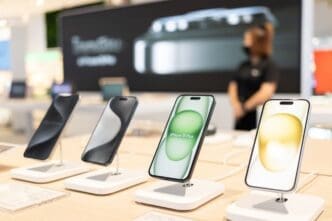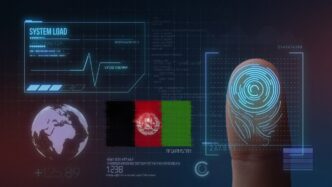Electronics imported into the United States have been granted an exemption from President Donald Trump’s reciprocal tariffs, as indicated in a U.S. Customs and Border Protection notice published late Friday. This exemption covers products such as smartphones, computer monitors, and various electronic components. According to the notice, the exemption applies to products entering the U.S. or being removed from warehouses starting April 5. This development follows the Trump administration’s recent imposition of a minimum tariff rate of 145% on Chinese goods imported into the U.S., though it excludes the ongoing 20% tariff on Chinese goods linked to the fentanyl trade.
The tariff exemption is expected to significantly impact tech giants like Apple, who manufacture a substantial portion of their products, including iPhones, in China. Wedbush Securities estimates that approximately 90% of Apple’s iPhone production occurs in China. On Saturday, Wedbush analysts described the tariff exclusion as “the best news possible for tech investors,” noting it allows major tech firms like Apple, Nvidia, and Microsoft, along with the broader tech industry, to relax over the weekend.
“This is a big step forward for U.S. tech in obtaining these exemptions and represents the most bullish news we could have heard this weekend,” Wedbush stated. “Now we move onto the next stage of negotiations over the broader China tariff war, which will take several months at least.”
Counterpoint Research estimates that Apple holds up to six weeks of inventory in the United States, suggesting that once this supply is depleted, prices could have been expected to rise. The White House remarked on Saturday that President Trump will persist in encouraging tech companies to bring production to the U.S.
“President Trump has made it clear that America cannot rely on China to manufacture critical technologies such as semiconductors, chips, smartphones, and laptops,” stated White House press secretary Karoline Leavitt. “That’s why the President has secured trillions of dollars in U.S. investments from the largest tech companies in the world, including Apple, Taiwan Semiconductor Manufacturing Company, and Nvidia. At the President’s direction, these companies are working swiftly to onshore their manufacturing to the United States.”
On Friday, President Trump mentioned potential exclusions to his extensive tariffs while addressing reporters on Air Force One. “There could be a couple of exceptions for obvious reasons, but I would say 10% is a floor,” he said. Economists caution that the cost of tariffs may eventually be transferred to consumers, which has spurred many Americans to acquire high-cost items like cars and electronics due to declining consumer sentiment.
Nintendo announced on April 4 that it would delay the U.S. preorder date of its Switch 2 gaming console to assess the potential impact of tariffs and evolving market conditions. Initially priced at $450, experts now suggest the Switch 2 could cost around $600 due to tariffs. The Trump administration argues that these tariffs will lead to more manufacturing jobs in the United States, counteracting a long-term decline. However, certain products cannot be readily produced domestically, thus increasing production costs in American factories.
Electronic components like semiconductors and microchips, heavily outsourced to Asian manufacturers for cost efficiency, are now exempt, as per the Friday notice. This exemption could benefit Asian chipmakers, including Taiwan Semiconductor Manufacturing Company (TSMC), South Korea’s Samsung, and SK Hynix.
A White House official stated, “The president has remarked that autos, steel, pharmaceuticals, chips, and other specific materials will be included in specific tariffs to ensure fair and effective application.” The official also noted that Trump will soon request a study on the national security effects of semiconductor imports, known as a Section 232 study.
During a Republican National Congressional Committee event on Tuesday, Trump criticized the Biden administration for awarding a $6.6 billion grant to TSMC for semiconductor production in Phoenix as part of the 2022 CHIPS and Science Act. Trump commented that he gave TSMC no financial aid and told the company, “If you don’t build your plant here, you’re going to pay a big tax — 25, maybe 50, maybe 75, maybe 100%.”
Your World Now: Implications of Tariff Exemptions on Electronics
- Cost Stability for Consumers: The tariff exemptions on electronics are likely to prevent potential price hikes on products like smartphones and computer monitors, allowing consumers to enjoy stable pricing.
- Boost for Tech Industry: This move offers relief for tech giants such as Apple and Microsoft, enabling them to maintain operations without new cost burdens, which could lead to sustained product development and innovation.
- Impact on Job Market: While promoting onshoring, the exemption allows tech companies time to adjust their manufacturing strategies, potentially protecting existing jobs linked to global supply chains.
- Economic Confidence: The news may boost consumer confidence, reducing panic buying and stabilizing market conditions, which benefits the overall economy.
- Global Trade Relations: The exemption offers a temporary reprieve in escalating trade tensions, which could foster more constructive negotiations between the U.S. and China.
- Pressure on Local Manufacturing: Despite the exemptions, the push for domestic production continues, which may prompt a gradual shift in manufacturing strategies and potential investment in U.S. facilities.








